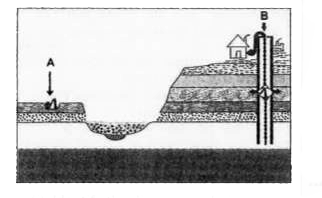Study the following eartoon carefully and answer the questions that follow :

(i) Identify that name and leader shown on the right in the cartoon
(ii) What type of relationship does the cartoon indicate between the people and the ruler ?
(iii) In your opinion, how successful was the approach adopted by the leader on the right to solve the issue of princely states ?
(i) Sardar Vallabhbhai Patel
(ii) The cartoon shows that the princely rulers oppressed and exploited the people.
(iii) Sardar Patel was extremely successful in solving the issue of the princely states marger/ accession with India.
Topper's Solved these Questions
- CHALLENGES OF NATION-BUILDINGBOOK - FULL MARKSCHAPTER - CHALLENGES OF NATION-BUILDINGEXERCISE - PREVIOUS YEARS BOARD QUESTIONS WITH ANSWERS ( V.Long answer type questions-II)
5 Videos
- CHALLENGES OF NATION-BUILDINGBOOK - FULL MARKSCHAPTER - CHALLENGES OF NATION-BUILDINGEXERCISE - RESOURCE MATERIAL (Vert Short Answer Type Question)
1 Videos
- CHALLENGES OF NATION-BUILDINGBOOK - FULL MARKSCHAPTER - CHALLENGES OF NATION-BUILDINGEXERCISE - PREVIOUS YEARS BOARD QUESTIONS WITH ANSWERS ( IV. Long answer type questions-II)
1 Videos
- ALTERNATIVE CENTRES OF POWER BOOK - FULL MARKSCHAPTER - ALTERNATIVE CENTRES OF POWER EXERCISE - PREVIOUS YEARS BOARD QUESTIONS WITH ANSWER (LONG ANSWER TYPE QUESTIONS)
9 Videos
- CHALLENGES TO AND RESTORATION OF THE CONGRESS SYSTEM ( THIS CHAPTER HAS BEEN OMITTED FROM THE LATEST SYALLBUS )BOOK - FULL MARKSCHAPTER - CHALLENGES TO AND RESTORATION OF THE CONGRESS SYSTEM ( THIS CHAPTER HAS BEEN OMITTED FROM THE LATEST SYALLBUS )EXERCISE - Previous Years Board Questions With Answer ( V. Long Anwer Type Question - II )
8 Videos
Similar Questions
Study the following diagram and answer the questions that follow:

(i) Identify and name the steel plant shown in this diagram.
(ii) Name the mining fields which supply coal and limestone to this plant.
(iii) Mention the source of water for this plant.
View SolutionStudy the cartoon given below and answer the questions that follow:
(i) Identify the person in the centre of the cartoon and mention the challenge surrounding him.
(ii) What does the cartoon actually refer?
(iii) How did India avoid all these conflicts?
View Solution
Knowledge Check
Study the given information carefully and answer the questions that follow:
(i) A, B, C, D, E, F and G are sitting on a wall and all of them are facing east.
(ii) C is on the immediate right of D.
(iii) B is at an extreme end and has E as his neighbour.
(iv) G is between E and F.
(v) D is sitting third from the south end.
Which of the following pairs of people are sitting at the extreme ends?AABBAECCBDFB
Study the diagram given below and answer the questions that follow :

(i) Identify the diagram and give proper title to it.
(ii) What type of mining activities are presented by A and B?
(iii) What is the main differences between the two methods of mining as shown in A and B?
View SolutionStudy the given map showing dairy farming regions carefully and answer the questions that follow:

(i) Identify and name the areas marked as A and B, marked on the map.
(ii) Define 'dairy farming'.
(iii) Explain any three characteristics of dairy farming.
View SolutionStudy of following map and answer the questions given below:

(i) Name the railway line shown in this map.
(ii) In which country does this railway line lie?
(iii) Name the station marked in the map as A and B.
View SolutionCarefully observe the figure and then answer the questions that follow :
 (i) Identify the ancestors of humans shown in the figure.
(i) Identify the ancestors of humans shown in the figure.
(ii) Write any two characters of each A and C.
(iii) What is the cranial capacity of B ?
(iv) What is the height of D ?
(v) What type of teeth does D had ?
View SolutionStudy the following map and answer the question given below:

(i) Name the railway line shown in this map.
(ii) In which country does this railway line lie?
(iii) Name the two ocean coasts which are linked by this railway line.
View SolutionDirection: Study the following information carefully and answer the question given below. Certain numbers of persons are sitting in a row. All are facing in the north direction. M sits third to the left of N. Five people sit between M and K. S sits second to the right of K. O sits fifth to the right of R who is an immediate neighbor of M. L sits second to the left of O. K sits third from one of the extreme ends. O is not an immediate neighbor of N. Number of people sit between R and L is same as the number of people sits to the right of O.
How many people sit between O and K?
View SolutionDirection: Study the following information carefully and answer the question given below. Certain numbers of persons are sitting in a row. All are facing in the north direction. M sits third to the left of N. Five people sit between M and K. S sits second to the right of K. O sits fifth to the right of R who is an immediate neighbor of M. L sits second to the left of O. K sits third from one of the extreme ends. O is not an immediate neighbor of N. Number of people sit between R and L is same as the number of people sits to the right of O.
How many people sitting in the given row?
View Solution
